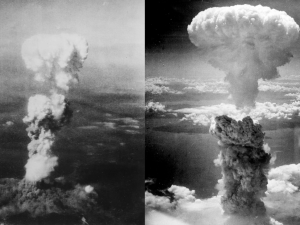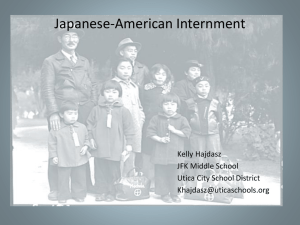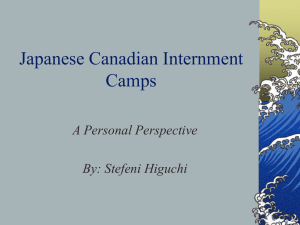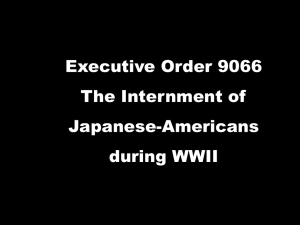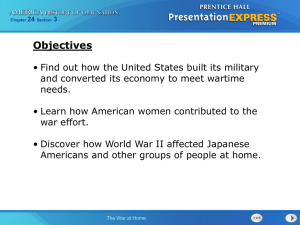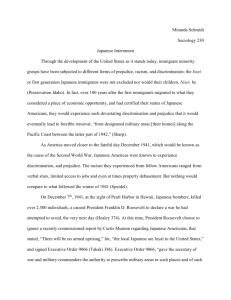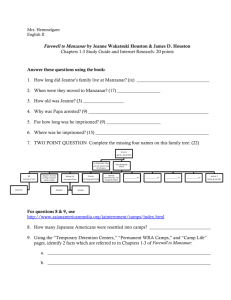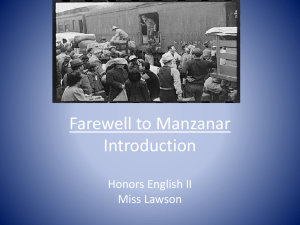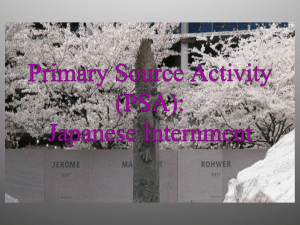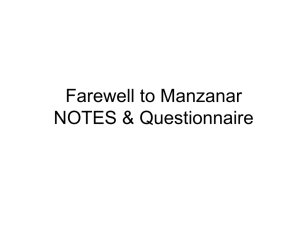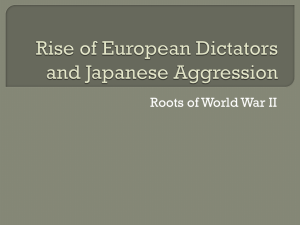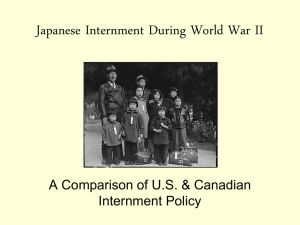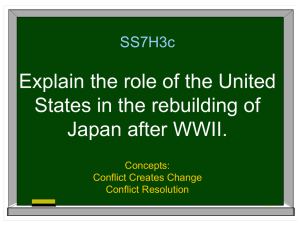Not just the Nazis had Camps!
advertisement
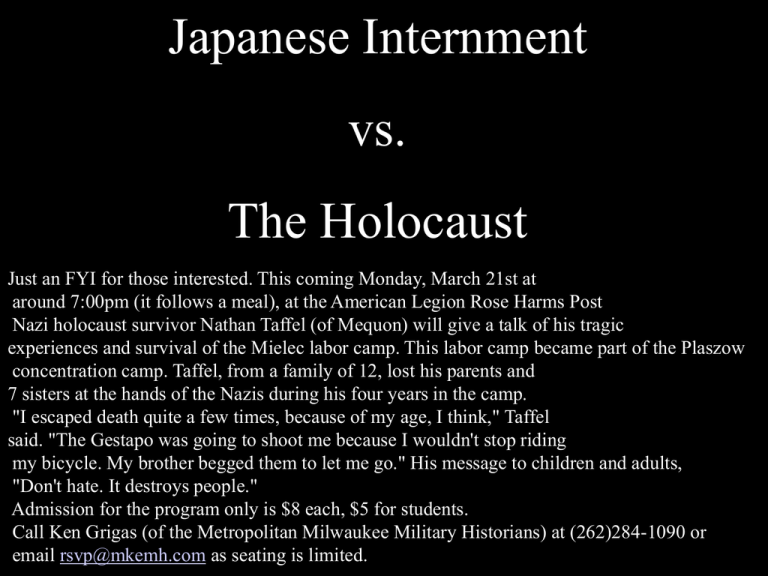
Japanese Internment vs. The Holocaust Just an FYI for those interested. This coming Monday, March 21st at around 7:00pm (it follows a meal), at the American Legion Rose Harms Post Nazi holocaust survivor Nathan Taffel (of Mequon) will give a talk of his tragic experiences and survival of the Mielec labor camp. This labor camp became part of the Plaszow concentration camp. Taffel, from a family of 12, lost his parents and 7 sisters at the hands of the Nazis during his four years in the camp. "I escaped death quite a few times, because of my age, I think," Taffel said. "The Gestapo was going to shoot me because I wouldn't stop riding my bicycle. My brother begged them to let me go." His message to children and adults, "Don't hate. It destroys people." Admission for the program only is $8 each, $5 for students. Call Ken Grigas (of the Metropolitan Milwaukee Military Historians) at (262)284-1090 or email rsvp@mkemh.com as seating is limited. Not just the Nazis had Camps! December 7th 1941 II. The Home Front • A. Japanese Internment • 1. Executive Order 9066 – February 20, 1942 • - The order attempts to protect the U.S. from acts of sabotage by creating military zones that allow persons of Japanese ancestry to be relocated. EXECUTIVE ORDER 9066 Authorizing the Secretary of War to Prescribe Military Areas February 19, 1942 WHEREAS, the successful prosecution of the war requires every possible protection against espionage and against sabotage to national defense material, national defense premises and national defense utilities as defined in Section 4, Act of April 20, 1918, 40 Stat. 533, as amended by the Act of November 30, 1940, 54 Stat. 1220, and the Act of August 21, 1941, 55 Stat. 655 (U.S.C. Title 50, Sec. 104): We know Concentration Camps are morally wrong! The Big Three: Franklin Roosevelt in the middle with Stalin and Churchill A. Japanese Internment continued… • 2. 1st and 2nd generation Japanese Americans. • 3. Told to gather belongings and report to assembly centers. • 4. From assembly centers to the internment camps. • 5. 110,000 - 120,000 individuals affected. Location of Japanese Internment Camps During the 1930s and 1940s, German Nazi leaders established 22 concentration camps where Jews, along with gypsies, homosexuals, Communists, Slavs, and others judged undesirable, were imprisoned. Many prisoners were worked to death, shot, gassed, or given lethal injections. By the end of the war, more than 10 million people had died in concentration camps. People of Japanese descent, relocated from the Seattle area, unload their belongings as they arrive at an internment camp in Puyallup, Wash., in April, 1942. As military police stand guard, people of Japanese descent wait at a transport center in San Francisco April 6, 1942 for relocation to an internment center Japanese citizens wait in line for their assigned homes at an alien reception center in Manzanar, Calif., on March 24, 1942. The Santa Anita Park race track is converted into an internment camp for evacuated Japanese Americans This is a general view of the Gila River, Canal, Japanese internment camp north of Phoenix, Ariz. Work Makes You Free????? Housing in Japanese Internment Camp Members of the Chick-A-Dee Japanese American women's softball team, relocated from Los Angeles, practice at the internment center in Mandazar, Ca., Children in a Japanese Internment Camp Children of Auschwitz Korematsu v. USA - see hand out • During World War II A little over 100,000 Japanese-Americans were placed in “war relocation camps” by the US government. • The US Supreme Court upheld this action! Who was right in 1944? Who is right today? How do we Apologize??? 6. $20,000???? • In 1988, the US government admitted that the relocation of Japanese Americans during World War II was wrong! • Congress voted to pay each of the internees still alive $20,000 and Congress apologized for the actions of the Government during World War II. Korematsu Honored with Medal of Freedom 1996 This week, as we commemorate the Day of Remembrance, marking the years since the Executive Order was issued during World War II which resulted in the incarceration of more than 110,000 Japanese Americans, we should stop and reflect on the journey of a true hero of the civil rights movement, Fred Korematsu. The way I've heard the story is that in June of 1942, Fred Korematsu, a 22-year-old draftsman, was locked up in the Oakland Jail simply because he was Japanese! It was a long journey from Fred Korematsu's incarceration in a local jail, to concentration camps, through the darkest days of wartime anti-Japanese hysteria, all the way to the U.S. Supreme Court. His brave challenge to the government's decision to intern Japanese Americans was rejected then by the high court; his conviction for refusing to obey was upheld. It was a journey so painful, that for decades he couldn't even share these events with his own children. Yet forty years later, with that same sense of justice and courage, he decided to reopen the case; and, in 1983, won a successful reversal of his conviction. President Clinton presents Fred Korematsu with a Presidential Medal of Freedom. Korematsu's legal challenges to civilian exclusion orders during World War II helped spur the redress movement for JapaneseAmericans Manzanar Japanese internment camp near Independence, Calif. 1997
